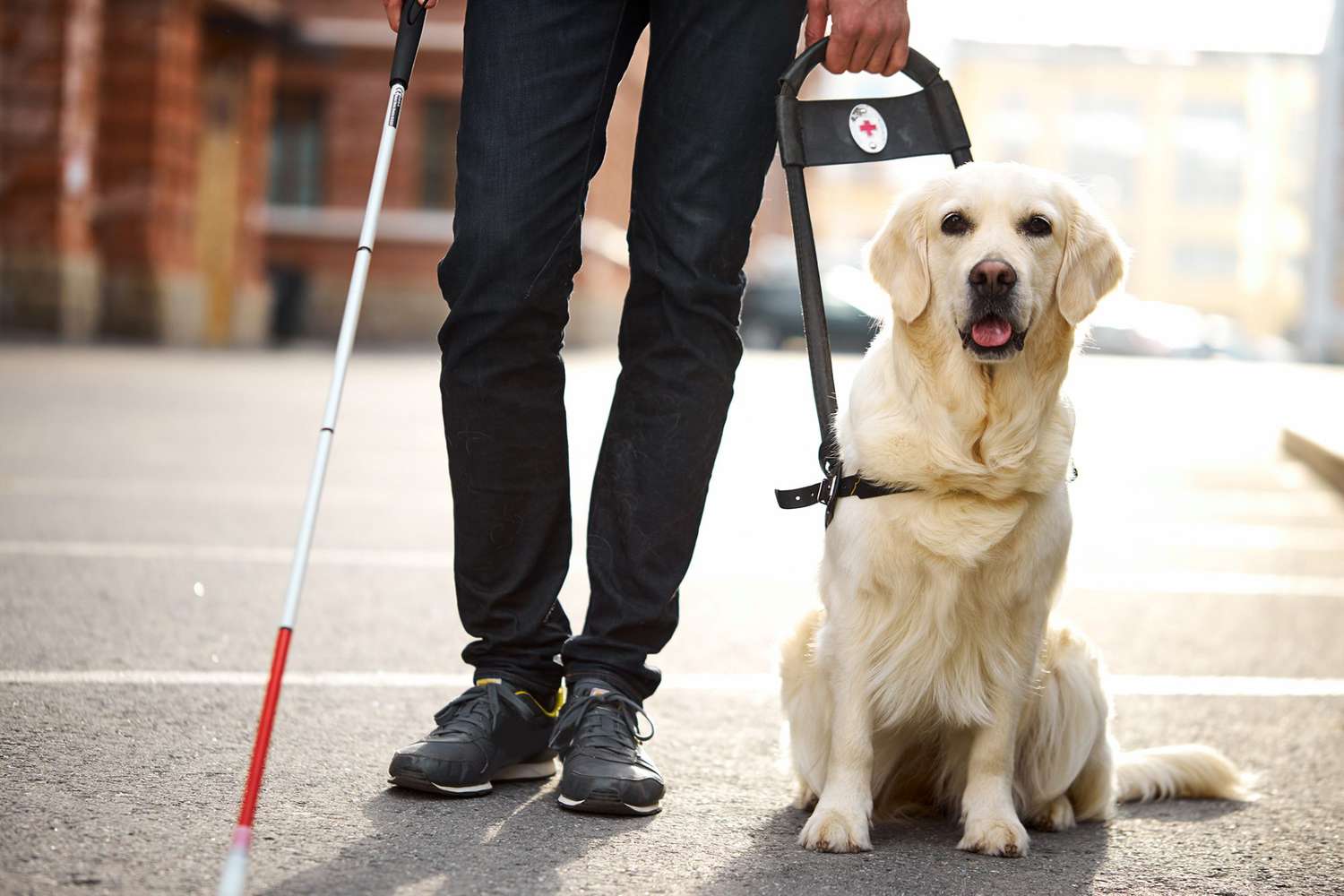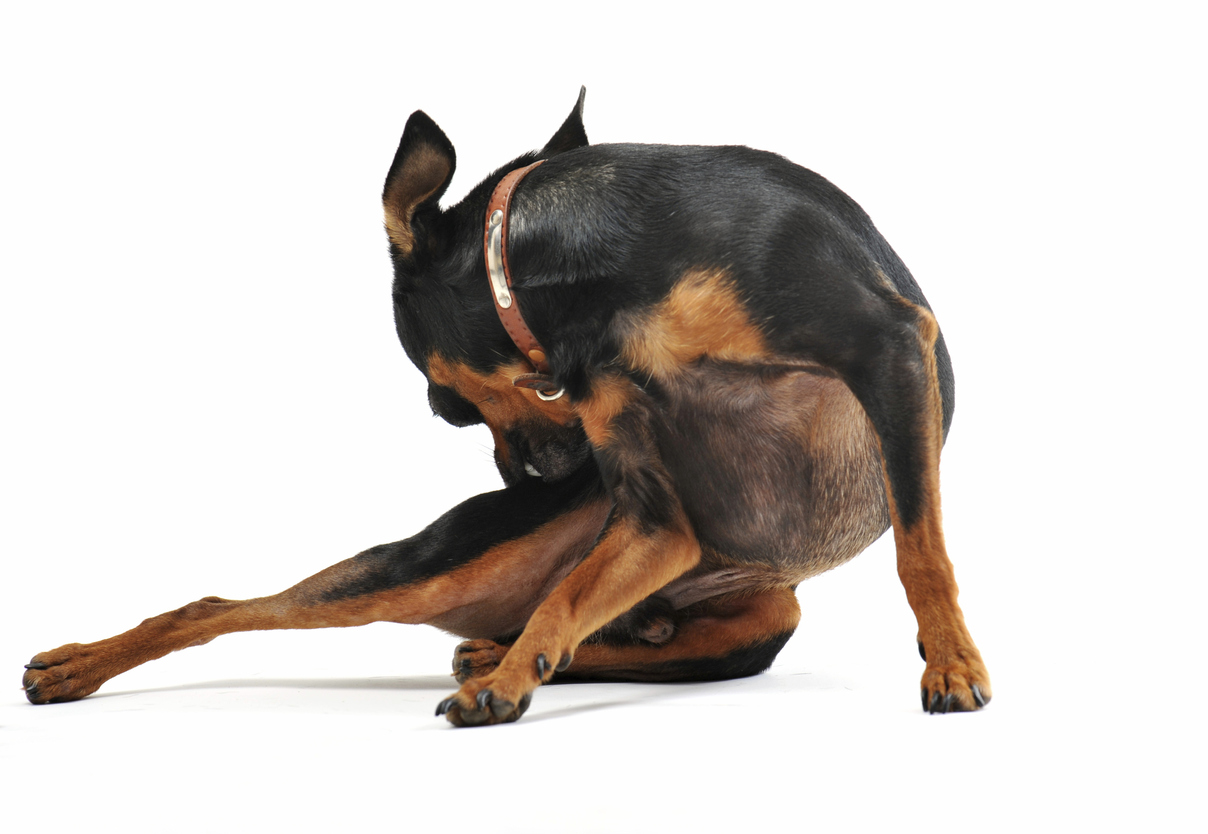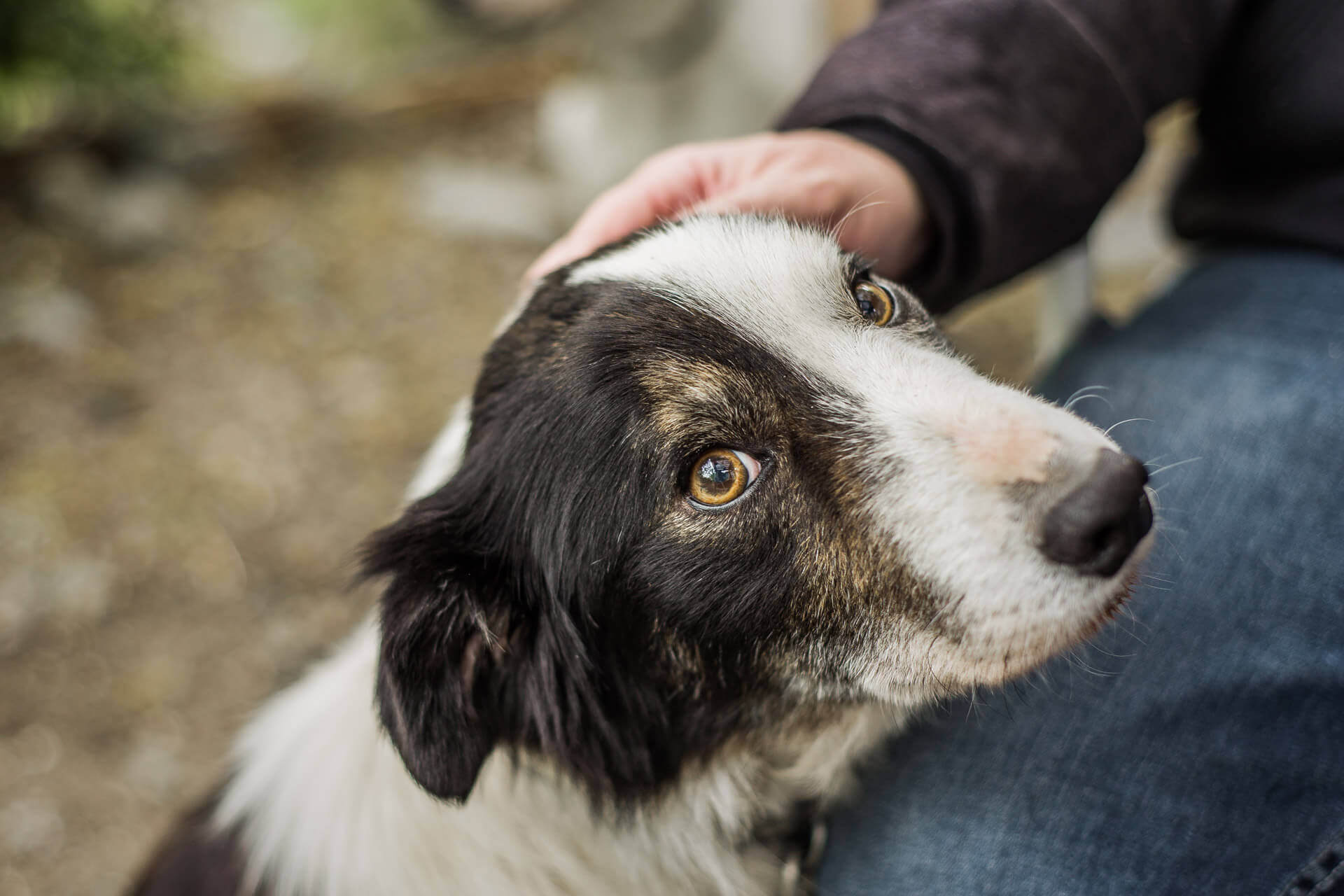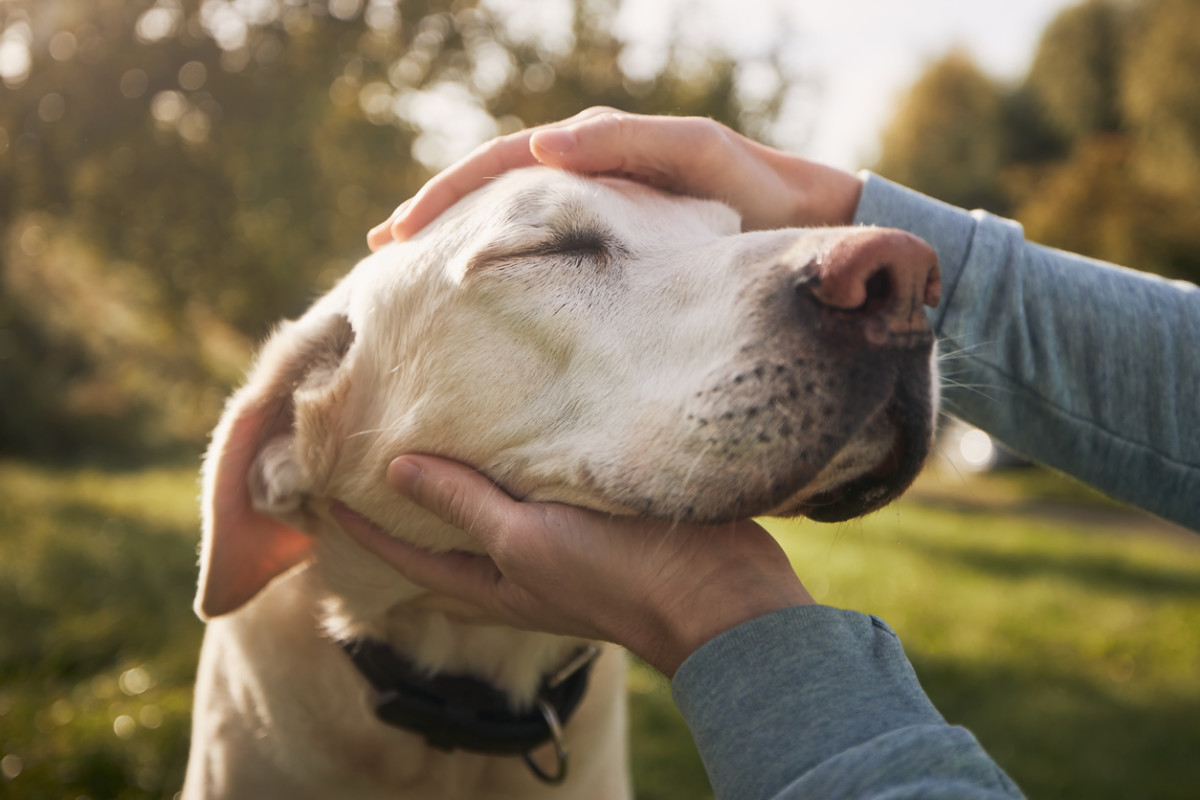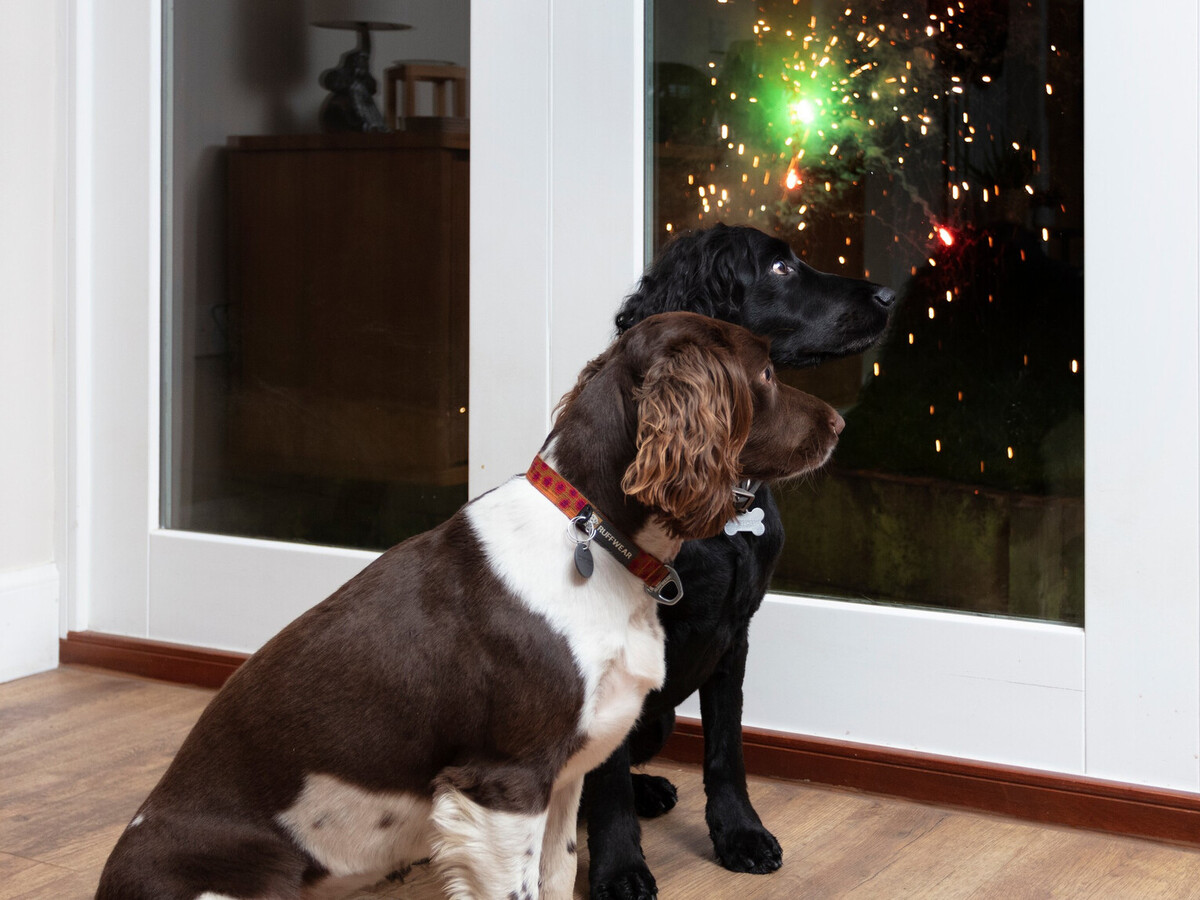Home>Health & Wellness>Behavior & Cognitive Care>How Long Can It Take For Prozac To Help A Dog With Anxiety


Behavior & Cognitive Care
How Long Can It Take For Prozac To Help A Dog With Anxiety
Published: January 29, 2024
Discover how Prozac can help dogs with anxiety and learn about the timeline for its effectiveness. Get expert insights on behavior and cognitive care for your pet.
(Many of the links in this article redirect to a specific reviewed product. Your purchase of these products through affiliate links helps to generate commission for Pawsomeoldies.com, at no extra cost. Learn more)
Table of Contents
Introduction
Introducing Prozac to alleviate anxiety in dogs is a decision that requires careful consideration and understanding. As a pet owner, witnessing your furry companion struggle with anxiety can be distressing. Whether it's separation anxiety, noise phobia, or generalized anxiety, the impact on your dog's well-being is palpable. In such instances, seeking professional guidance is crucial to ensure the best possible care for your pet.
Prozac, also known by its generic name fluoxetine, is a medication that belongs to the selective serotonin reuptake inhibitor (SSRI) class. It is commonly prescribed to manage anxiety and other behavioral issues in dogs. However, it's important to recognize that the effects of Prozac on dogs can vary, and the timeline for observing improvements may differ from one dog to another.
Understanding the nuances of Prozac and its impact on canine anxiety is essential for pet owners considering this treatment option. This article delves into the factors influencing the time it takes for Prozac to help a dog with anxiety, the typical timeline for observing improvements, and the importance of monitoring and adjusting the dosage for optimal results. By gaining insights into these aspects, pet owners can make informed decisions and provide the best possible support for their beloved canine companions.
Understanding Prozac and its effects on dogs
Prozac, known generically as fluoxetine, is a medication that falls under the selective serotonin reuptake inhibitor (SSRI) class. It is widely recognized for its use in treating various behavioral issues in dogs, including anxiety. As an SSRI, Prozac works by increasing the levels of serotonin in the brain, which is a neurotransmitter associated with mood regulation. By doing so, it helps to alleviate anxiety and improve overall emotional well-being in dogs.
When administered to dogs, Prozac targets the chemical imbalances in the brain that contribute to anxiety-related behaviors. These behaviors may manifest as excessive barking, destructive chewing, trembling, or withdrawal. Prozac aids in restoring the balance of neurotransmitters, thereby reducing the intensity and frequency of these anxiety-driven actions.
It's important to note that the effects of Prozac on dogs are not immediate. Unlike some medications that offer rapid relief, Prozac typically requires time to build up in the dog's system before its full therapeutic effects are realized. This gradual process is essential for the medication to exert its influence on the dog's neurochemistry and produce sustainable improvements in anxiety-related behaviors.
Furthermore, Prozac is not a sedative or tranquilizer. Instead of inducing a state of calmness through sedation, it works by addressing the underlying chemical imbalances that contribute to anxiety. This approach aims to promote a more balanced and stable emotional state in dogs, allowing them to cope with stressors and triggers more effectively.
Understanding the mechanism of action of Prozac and its effects on dogs is crucial for pet owners considering this treatment option. It provides insight into the medication's role in addressing anxiety-related behaviors and sets realistic expectations regarding the timeline for observing improvements in their canine companions. By gaining a comprehensive understanding of Prozac and its effects, pet owners can make informed decisions in collaboration with their veterinarians to ensure the well-being of their beloved pets.
Factors affecting the time it takes for Prozac to help a dog with anxiety
Several factors influence the duration it takes for Prozac to alleviate anxiety in dogs. Understanding these factors is essential for pet owners and veterinarians to set realistic expectations and optimize the effectiveness of the treatment.
-
Individual Variation: Dogs, like humans, exhibit individual variations in their response to medications. Factors such as age, breed, overall health, and genetic predispositions can influence how a dog's body processes and responds to Prozac. Some dogs may show noticeable improvements in anxiety symptoms relatively quickly, while others may require a longer duration for the medication to take full effect.
-
Severity of Anxiety: The intensity and scope of a dog's anxiety play a significant role in determining the timeline for observing improvements with Prozac. Dogs experiencing severe or long-standing anxiety may require a more extended period for the medication to effectively address their symptoms. In contrast, dogs with milder anxiety issues may respond more promptly to treatment.
-
Underlying Triggers: Identifying and addressing the underlying triggers contributing to a dog's anxiety is crucial. Prozac is designed to help regulate the dog's neurochemistry and emotional responses, but if the underlying triggers are ongoing or pervasive, it may take longer to observe substantial improvements. Understanding and addressing these triggers, such as environmental stressors or past traumatic experiences, can complement the effects of Prozac and expedite the alleviation of anxiety.
-
Consistency in Administration: The consistent and accurate administration of Prozac is vital for its effectiveness. Ensuring that the dog receives the prescribed dosage at the same time each day helps maintain stable levels of the medication in the bloodstream. Inconsistencies or missed doses can disrupt the therapeutic process and prolong the time it takes for Prozac to help alleviate the dog's anxiety.
-
Comprehensive Treatment Approach: Prozac is often part of a comprehensive treatment approach for managing canine anxiety. Behavioral interventions, environmental modifications, and lifestyle adjustments may complement the effects of Prozac. The integration of these elements can influence the overall timeline for observing improvements, as they work synergistically to address the multifaceted nature of canine anxiety.
By considering these factors, pet owners and veterinarians can gain a holistic understanding of the variables influencing the timeline for observing improvements in a dog's anxiety with Prozac. This knowledge empowers them to tailor the treatment approach to the specific needs of the dog, thereby enhancing the likelihood of positive outcomes and improved well-being for the canine companion.
Typical timeline for seeing improvement in a dog's anxiety with Prozac
The timeline for observing improvement in a dog's anxiety with Prozac is a multifaceted aspect that necessitates a comprehensive understanding. It's important to recognize that the effects of Prozac on a dog's anxiety are not immediate. Unlike medications that offer rapid relief, Prozac typically requires time to build up in the dog's system before its full therapeutic effects are realized.
In general, the timeline for seeing improvement in a dog's anxiety with Prozac can vary significantly from one dog to another. It is influenced by a combination of factors, including the dog's individual response to the medication, the severity of the anxiety, the presence of underlying triggers, and the consistency in administering the medication.
For some dogs, initial signs of improvement may become noticeable within the first few weeks of starting Prozac. These early indicators may include a reduction in anxiety-related behaviors, improved ability to cope with stressors, and a more balanced emotional state. However, it's important to approach these initial improvements with cautious optimism, as the full therapeutic effects of Prozac may take longer to manifest.
In many cases, the optimal benefits of Prozac for alleviating a dog's anxiety may become more pronounced after 6 to 8 weeks of consistent administration. During this period, the medication gradually accumulates in the dog's system, exerting its influence on the neurochemical imbalances associated with anxiety. As a result, pet owners may observe a more sustained reduction in anxiety-related behaviors, enhanced emotional stability, and an overall improvement in the dog's well-being.
It's crucial for pet owners to maintain open communication with their veterinarian throughout this timeline, providing regular updates on the dog's response to Prozac. This collaborative approach allows for ongoing assessment and potential adjustments to the treatment plan to optimize the benefits for the dog.
While the timeline for seeing improvement in a dog's anxiety with Prozac may extend beyond the initial weeks of treatment, it's important for pet owners to remain patient and consistent in their approach. Every dog is unique, and the timeline for experiencing the full benefits of Prozac may vary accordingly. By remaining attentive to the dog's progress and adhering to the prescribed treatment regimen, pet owners can support their canine companions in realizing the potential long-term improvements in anxiety management with Prozac.
Understanding this typical timeline for improvement in a dog's anxiety with Prozac empowers pet owners to approach the treatment process with realistic expectations and a proactive mindset, ultimately contributing to the well-being and quality of life of their beloved pets.
Monitoring and adjusting Prozac dosage for optimal results
Monitoring and adjusting the dosage of Prozac is a critical aspect of ensuring optimal results in alleviating a dog's anxiety. The initial prescription of Prozac is based on various factors, including the dog's weight, overall health, and the severity of anxiety symptoms. However, the effectiveness of the initial dosage may need to be evaluated and potentially adjusted over time to best address the dog's specific needs.
Regular monitoring of the dog's response to Prozac is essential for assessing the medication's impact on anxiety-related behaviors and emotional well-being. Pet owners should closely observe their dog's behavior, noting any changes in anxiety symptoms, overall demeanor, and interactions with their environment. Keeping a journal or log of the dog's behavior can provide valuable insights for both pet owners and veterinarians when evaluating the effectiveness of the current dosage.
Open communication with the veterinarian is paramount in this process. Scheduled follow-up appointments allow for comprehensive discussions regarding the dog's progress and any observed changes since starting Prozac. Based on the feedback and observations, the veterinarian can make informed assessments and recommendations regarding the need for dosage adjustments.
In some cases, the initial dosage of Prozac may require modification to optimize its effectiveness in managing the dog's anxiety. Factors such as the dog's individual response, changes in weight, or the emergence of new stressors may warrant dosage adjustments. It's important to emphasize that any changes to the dosage should only be made under the guidance and supervision of a veterinarian.
When adjusting the dosage of Prozac, gradual changes are typically recommended to minimize potential adverse effects and allow the dog's system to adapt to the new dosage. This may involve incremental increases or decreases in the medication, depending on the dog's response and the veterinarian's assessment. Throughout this process, ongoing monitoring of the dog's behavior and well-being remains crucial to evaluate the impact of the adjusted dosage.
Additionally, the veterinarian may recommend periodic blood tests to assess the dog's response to Prozac and ensure that the medication is being metabolized effectively. These tests can provide valuable data regarding the concentration of Prozac in the dog's bloodstream, guiding the decision-making process when considering dosage adjustments.
By actively monitoring the dog's response to Prozac and collaborating closely with the veterinarian, pet owners can contribute to the ongoing optimization of the medication's dosage for their canine companion. This proactive approach aims to maximize the benefits of Prozac in managing anxiety while prioritizing the dog's safety and well-being.
Ultimately, the process of monitoring and adjusting the dosage of Prozac for optimal results underscores the importance of personalized care and tailored treatment approaches in addressing canine anxiety. Through attentive observation, open communication, and informed adjustments, pet owners can play a proactive role in supporting their dog's journey toward improved emotional well-being and a higher quality of life.
Read more: How To Help Aggressive Anxiety In Dogs
Conclusion
In conclusion, the decision to introduce Prozac as a treatment for canine anxiety warrants careful consideration and a comprehensive understanding of its effects and implications. Prozac, or fluoxetine, operates as a selective serotonin reuptake inhibitor (SSRI), targeting the neurochemical imbalances associated with anxiety in dogs. While the medication offers the potential to alleviate anxiety-related behaviors and enhance emotional stability, it is essential for pet owners to approach the treatment process with realistic expectations and a proactive mindset.
The timeline for observing improvements in a dog's anxiety with Prozac is influenced by various factors, including individual variations in response, the severity of anxiety, underlying triggers, consistency in administration, and the integration of a comprehensive treatment approach. Understanding these factors empowers pet owners and veterinarians to tailor the treatment approach to the specific needs of the dog, thereby enhancing the likelihood of positive outcomes and improved well-being for the canine companion.
Furthermore, the typical timeline for seeing improvement in a dog's anxiety with Prozac may extend beyond the initial weeks of treatment, emphasizing the importance of patience and consistency in the approach. Open communication with the veterinarian and regular monitoring of the dog's response to Prozac are crucial elements in assessing the medication's impact and potential need for dosage adjustments. By actively participating in the monitoring and adjustment process, pet owners can contribute to the ongoing optimization of the medication's dosage for their canine companion, ultimately supporting the dog's journey toward improved emotional well-being and a higher quality of life.
In essence, the decision to incorporate Prozac into a comprehensive treatment plan for canine anxiety reflects a commitment to providing the best possible care for a beloved pet. By gaining a thorough understanding of Prozac and its effects, pet owners can make informed decisions in collaboration with their veterinarians, ensuring the well-being and emotional stability of their canine companions. This proactive and attentive approach underscores the significance of personalized care and tailored treatment strategies in addressing canine anxiety, ultimately fostering a positive and supportive environment for dogs to thrive.

